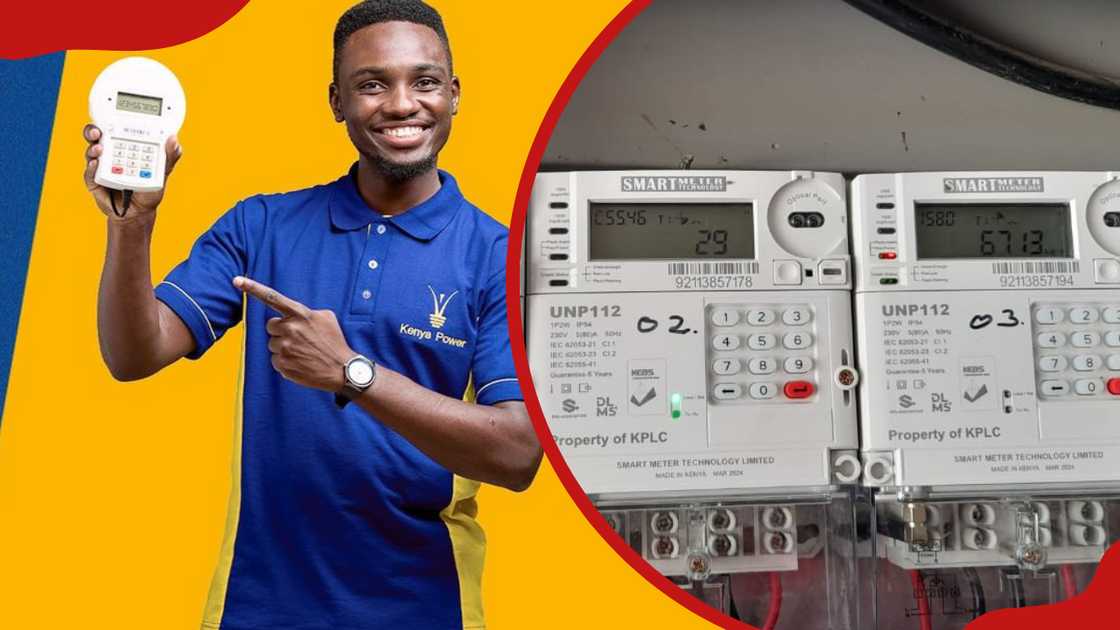-
The Kenya Power and Lighting Company (KPLC) has introduced adjustments to the electricity rates for the financial year 2025/26.
-
KPLC explained that the price of electricity or the monthly bill sent to customers is determined by the tariff
-
The utility company mentioned that customers have the ability to lower their monthly electricity expenses and offered advice on reducing these costs.
Wycliffe Musalia boasts more than six years of expertise in areas such as finance, business, technology, climate, and health reporting. His work offers significant understanding of both Kenya’s and international economic patterns. Presently, he serves as a business editor.
.co.ke
.
The Kenya Power and Lighting Company (KPLC) has provided advice to Kenyans on how they can lower their monthly power bills.

KPLC stated that every customer’s invoice is determined according to their specific rate plan.
What is KPLC tariff?
As stated by the utility company, a tariff represents the complete pricing framework detailing all charges a consumer incurs for electrical power usage. It encompasses basic fees, taxations, surcharges, along with additional expenses.
The tariff depends on the customer’s monthly electricity consumption rather than their location.
“As per our billing process, we utilize a standard rate framework which is entirely based on your consumption levels,” stated KPLC in an official customer guide.
What strategies can KPLC customers use to reduce their monthly bills?
Kenya Power has also recommended that customers maintain their monthly usage under 30 units for three successive months.
This will enable the electricity supplier to automatically transfer the customer to the Lifeline tariff throughout our assessment process.
Return to a reduced tariff rate by keeping track of your usage so that you can decrease it to under an average of 30 units per month for the next three months.
Kenya Power stated, “If your typical usage drops beneath this limit, you’ll be automatically transferred to the Domestic Lifeline category after our assessment.”

What tariff do new customers receive?
The firm stated that all new electrical hookups begin under the Domestic Ordinary pricing plan, regardless of where you live or how much energy you anticipate using.
“Following three months of use, we’ll automatically assess your spending habits and modify your billing tier as needed. Should your usage qualify you for a reduced rate, this adjustment might result in actual cost reductions on your invoice,” stated the firm.
What are the updated KPLC rates?
Based on the tariffs set by the Energy and Petroleum Regulatory Authority (EPRA), domestic consumers receiving a lifeline service who use under 30 units each month are charged KSh 12.24 for every unit consumed.
The Kenya Power and Lighting Company (KPLC) has introduced adjustments to the electricity rates for the financial year 2025/26.
Customers who consume between 31 and 100 units each month fall under the Domestic Ordinary Tariff, whereas those consuming more than 100 units are categorized under the Commercial Tariff.
Kenya Power alerts customers about potential rise in power rates.
In March 2025, the Kenya Power and Lighting Company warned customers about a rise in electricity rates.
This was after suggestions to impose a fee of KSh 200 as a wayleave for each meter of power infrastructure installed.
KPLC has cautioned that these proposals might result in a 30% rise in electricity expenses should they be approved.
Kenya Power calculated the expense at approximately KSh 63.8 billion annually, indicating this cost would ultimately be transferred to customers.
Joseph Siror, the managing director of KPLC, cautioned that the pass-through costs will have a substantial impact on retail tariffs, potentially making electricity unattainable for numerous Kenyans.
